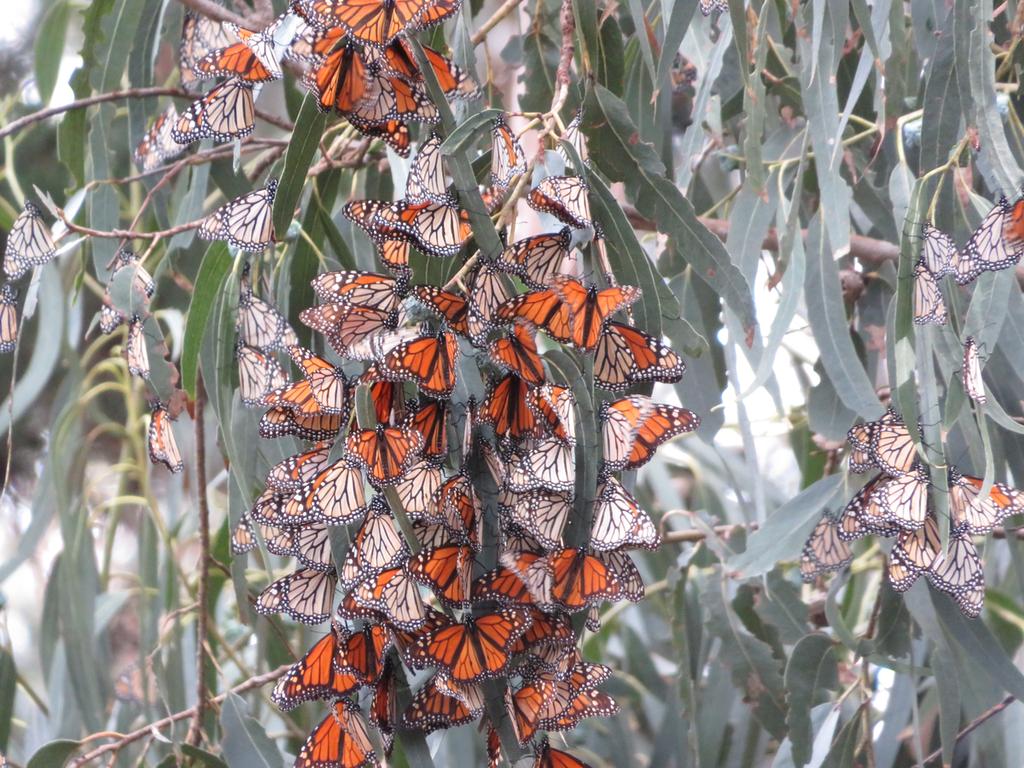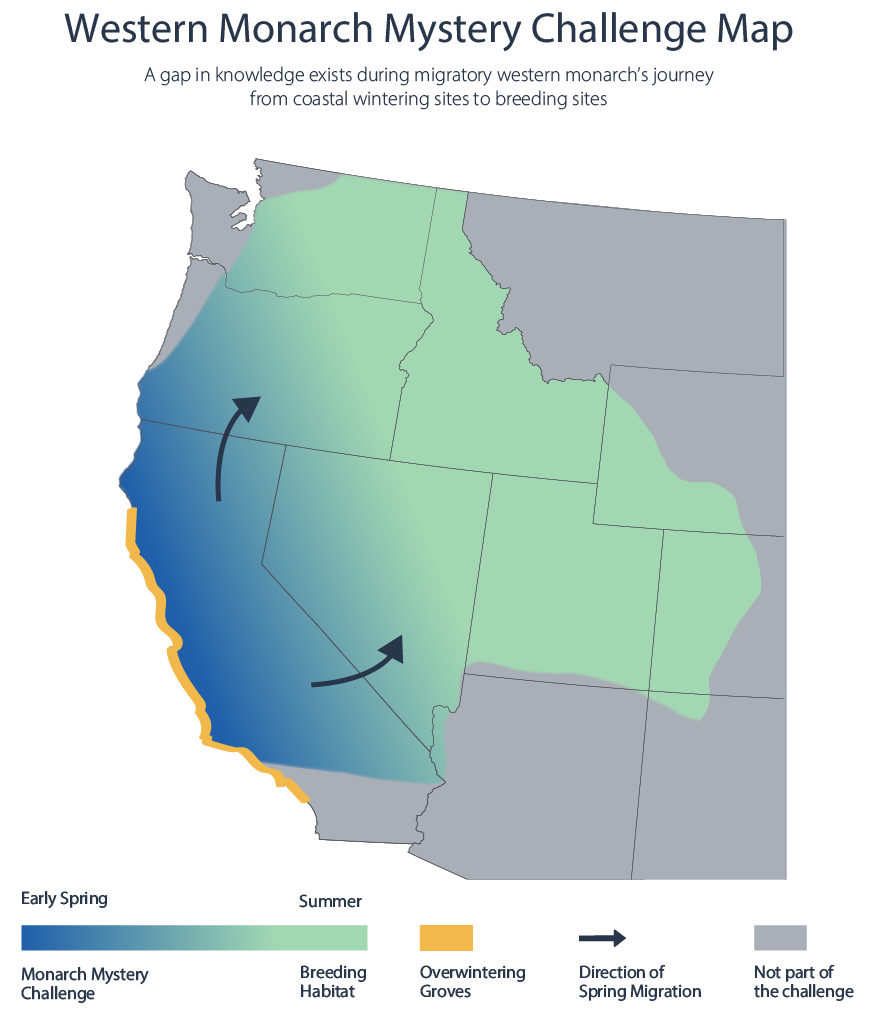For years, the number of Western monarch butterflies has been dropping. Last year, there was a surprising increase in monarch numbers. Now, scientists want people in the western US to help out by sending in any pictures of monarchs they take this spring.
Orange and black monarch butterflies are famous for their long migrations. They fly thousands of miles every year, flying north in the spring and summer, and south in the fall. Western monarchs spend the winter in coastal California. In the spring, they fly north and east – sometimes as far as Idaho.

(Source: Lisa Damerel, Xerces.org.)
Scientists have been very worried about Western monarchs. Their numbers have been dropping sharply since the 1980s.
Like many insects around the world, they are more threatened than ever these days. Some of the reasons include changes in weather patterns because of the climate crisis, dangerous chemicals used in farming, and the loss of the plants that support insects as humans take over more land.
So scientists were both surprised and pleased when last year’s Thanksgiving monarch count showed a huge increase in the number of butterflies. In 2020, only 2,000 monarchs were spotted. But in 2021, that number jumped to 247,237 monarchs.

(Source: Xerces Society.)
Scientists still don’t fully understand why the numbers increased so much. But they are studying it. And now that the numbers have increased, they want to do all they can to make sure the Western monarchs can recover.
Researchers have learned a lot about where Western monarchs spend the winters. But they know a lot less about where the butterflies go when they leave their winter homes. That’s why scientists from several universities are asking for help from “citizen scientists” in the American west this spring.
The project is called the “Western Monarch Mystery Challenge”, and it’s being organized by Cheryl Schultz of Washington State University and Elizabeth Crone of Tufts University. The researchers are asking anyone in the western US who sees a monarch butterfly outside of their winter homes this spring to take a picture and send it to them.

(Source: Western Monarch Mystery Challenge .)
By collecting the pictures, along with the date and location where the pictures were taken, the scientists hope to learn more about what happens to the butterflies after they leave their winter homes.
Last year’s increase in monarch numbers is great news. But the number of monarchs is still way below the millions of butterflies that migrated in the 1980s.
Still, experts are hopeful that the monarchs can bounce back. And they hope that by finding out where monarchs are in the spring, they can do a better job of protecting them in the future.

(Source: StockSnap, via Pixabay.)
If you’re able to take a picture of a Western monarch this spring before April 22, send the photo (along with the date and location) to: [email protected] The photos can also be uploaded with the iNaturalist app, or on the Western Monarch Milkweed Mapper website.
It’s okay if the picture is blurry or taken from far away, since the most important information is when and where the monarch was seen.
Did You Know…?
With so many Western monarchs spotted last fall, there should be some amazing opportunities to spot these butterflies on the move. To encourage people to send in pictures, the project is also offering those who take part a chance to win a $50 gift card each week.
